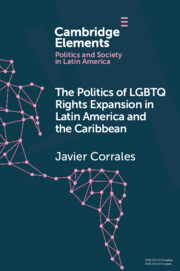Refine search
Actions for selected content:
12 results
9 - Religion’s Role in Social Healing
- from Part III - Contemporary Divisions
-
- Book:
- Civil Religion and the Renewal of American Politics
- Published online:
- 09 October 2025
- Print publication:
- 23 October 2025, pp 181-203
-
- Chapter
- Export citation
6 - Cleavages and Political Ambivalence in Peru
-
- Book:
- Evangelicals and Electoral Politics in Latin America
- Published online:
- 27 January 2023
- Print publication:
- 26 January 2023, pp 182-216
-
- Chapter
- Export citation
5 - Comfort and Political Quiescence in Chile
-
- Book:
- Evangelicals and Electoral Politics in Latin America
- Published online:
- 27 January 2023
- Print publication:
- 26 January 2023, pp 149-181
-
- Chapter
- Export citation
4 - Threats and Political Engagement in Brazil
-
- Book:
- Evangelicals and Electoral Politics in Latin America
- Published online:
- 27 January 2023
- Print publication:
- 26 January 2023, pp 112-148
-
- Chapter
- Export citation
13 - LGBTQ Rights: Singapore
- from V - Rights
-
-
- Book:
- Constitutionalism in Context
- Published online:
- 17 February 2022
- Print publication:
- 17 February 2022, pp 281-302
-
- Chapter
- Export citation
6 - Constitutional History and Constitutional Migration: Nepal
- from III - Constitutional Drafting and Revision
-
-
- Book:
- Constitutionalism in Context
- Published online:
- 17 February 2022
- Print publication:
- 17 February 2022, pp 113-135
-
- Chapter
- Export citation

The Politics of LGBTQ Rights Expansion in Latin America and the Caribbean
-
- Published online:
- 22 December 2021
- Print publication:
- 07 April 2022
-
- Element
- Export citation
BIGOTRY, PROPHECY, RELIGION, AND THE RACE ANALOGY IN MARRIAGE AND CIVIL RIGHTS BATTLES: RESPONDING TO COMMENTARIES ON WHO'S THE BIGOT? - Who's the Bigot? Learning from Conflicts over Marriage and Civil Rights Law. By Linda C. McClain. Oxford: Oxford University Press, 2020. Pp. 304. $39.95 (cloth); $26.99 (digital). ISBN: 9780190877200.
-
- Journal:
- Journal of Law and Religion / Volume 36 / Issue 2 / August 2021
- Published online by Cambridge University Press:
- 29 September 2021, pp. 358-369
-
- Article
- Export citation
SAME-SEX RELATIONS AND LEGAL TRADITIONS IN CAMEROON AND SOUTH AFRICA
-
- Journal:
- Journal of Law and Religion / Volume 36 / Issue 1 / April 2021
- Published online by Cambridge University Press:
- 30 April 2021, pp. 130-147
-
- Article
- Export citation
8 - Group Empathy in the Era of Trump
-
- Book:
- Seeing Us in Them
- Published online:
- 11 March 2021
- Print publication:
- 18 March 2021, pp 166-211
-
- Chapter
- Export citation
8 - Queering Human Rights
- from Part II - Fashioning Methods
-
-
- Book:
- The Cambridge Companion to Human Rights and Literature
- Published online:
- 24 June 2019
- Print publication:
- 11 July 2019, pp 114-126
-
- Chapter
- Export citation
Part II - Fashioning Methods
-
- Book:
- The Cambridge Companion to Human Rights and Literature
- Published online:
- 24 June 2019
- Print publication:
- 11 July 2019, pp 73-126
-
- Chapter
- Export citation
